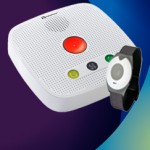Preventing and minimising the impact of falls for people with epilepsy

It is of the
utmost importance to take a proportionate, but considered approach to the
management of your safety if you have epilepsy.
There is a broad
range of situations and activities that present a degree of risk, even to
people who do not have epilepsy. However, it is also true that if someone
experiences seizures in relation to this condition, they may be placed at
greater risk of accidents and injuries as a result.
One such risk
that could be posed to some people with epilepsy, is that of falling. It isn’t
always easy for someone with epilepsy to know when they may be about to fall.
If this describes your situation, you might therefore consider taking certain
steps to help minimise the risks.
A few ways to
help prevent falls and injuries
Everyone falls
from time to time. So, the below tips could be well worth considering even if
your seizures are controlled and your risk of falling is not particularly
higher than the typical person who does not have epilepsy:
- Wearing
stable shoes with good tread, avoiding open-toed shoes or high heels that
could get easily caught on obstacles
- Doing
a home safety check, which would enable you to identify potential tripping
hazards and move them out of harm’s way
- Doing
similar checks for other spaces that you typically spend time in during
your day-to-day life, such as your workplace and the homes of friends and
relatives
- Taking
particular precautions when using items that can present a risk of falling
even to people who do not have epilepsy, such as ladders and heavy
equipment
- Taking
extra time to be mindful of your surroundings wherever you are, including
being aware of where you place your feet
- Improving
your all-round fitness through strength and balance exercises, which will
help lower your risk of falling, as well as of injuries if you do fall
- Making
yourself aware of any side effects of medications you are taking, such as
drowsiness, dizziness, or problems with balance.
How can you
lessen the impact of a fall if it does happen?
Even when all
sensible measures are followed, falls can still occur for people with epilepsy.
You might, however, think about taking the below steps to help minimise the
dangers of falls:
- Practising
falling in safe conditions – for example, on a soft carpet, slowly, and
with someone there to support you – so that can learn safe reactions to
falling and develop “muscle memory” for when you next fall unexpectedly
- Tucking
your chin and covering your head with your arms to help protect it; turn
your head to the side if you are falling face first
- Keeping
your body loose and moving with the fall, instead of tensing up, which
could worsen the impact of the fall or make it hurt more
- If
possible, rolling out of the fall in the direction you’re falling, so that
the energy is sent from the fall into the roll
- Using
a fall detection tool such as the GPS
Smart Tracker or Vibby
Oak Fall Detector, so that a fall can be detected and an alarm raised
to ensure help is quickly on the way.
If you have
questions about any of the products that we make available here at Epilepsy
Solutions, and ways in which they could help in the event of you falling,
please feel free to contact
our team today.





